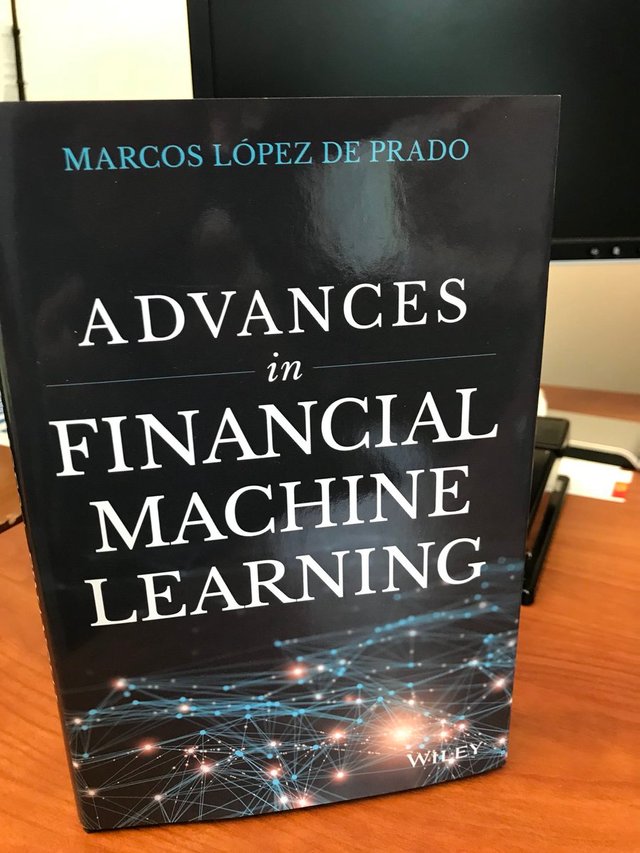
1.
고빈도매매가 위세를 세상 끝까지 떨치고 있을 때 영향력이 많았던 필자들이 있습니다. 특히 Market Microstructure를 다루었던 필자들입니다. 이후 고빈도매매도 저물고 빅데이타, 알고리즘트레이딩, 기계학습 등이 영향력을 키우면서 퇴조하였습니다. 그런데 예외인 분들이 몇 있습니다. 그중 한명이 Marcos Lopez de Prado입니다. 현재 True Positive Technologies의 대표를 맡고 있습니다. 제 블로그에서 검색을 해보시면 HFT와 관련한 논문 여럿 확인하실 수 있습니다. 가장 최근에 소개했던 논문은 기계학습과 관련한 논문입니다. 기계학습, 고빈도매매 및 기계학습펀드의 실패에서 소개했던 The 7 Reasons Most Machine Learning Funds Fail입니다. 이 자료는 2018년 The 10 Reasons Most Machine Learning Funds Fail로 발표되었습니다.
[gview file="http://www.smallake.kr/wp-content/uploads/2018/07/SSRN-id3104816.pdf"]
Marcos Lopez는 최근 Tabbforum에 기계학습을 금융에 적용할 수 있는 분야를 설명하는 네편의 글을 발표하였습니다. 투자와 관련하여 기계학습을 적용하려고 할 때 나타나는 편견을 다루면서 유용성을 설명합니다.
Financial markets are characterized by complex and ever-changing phenomena. Modern mathematical approaches, such as ML, provide the flexibility needed to cope with this complexity and dynamism, in ways than traditional quantitative methods do not.
Finance in the Age of Machine Learning, Part 1: Portfolio Allocation
Finance in the Age of Machine Learning, Part 2: Bet Sizing
Finance in the Age of Machine Learning, Part 3: The Black Box Myth
Finance in the Age of Machine Learning, Part 4: Regime Changes
2015년 Advances in Quantitative Meta-Strategies을 주제로 발표한 논문을 보시면 HFT에서 시작하여 알고리즘트레이딩, 퀀트투자 및 기계학습투자로 이어지는 연구흐름을 아실 수 있습니다.
Quantitative Meta-Strategies (QMS) are quantitative strategies designed to manage investment strategies. As a field, QMS is the mathematical study of the decisions made by the supervisor of a team of investment managers, regardless of whether their investment style is systematic or discretionary.
[gview file="http://www.smallake.kr/wp-content/uploads/2018/07/10_00_Marcos_Lopez_de_Prado_20150510.pdf"]
Marcos Lopez가 그 동안의 연구를 모아서 발표한 책인 Advances in Financial Machine Learning입니다. 2018년 2월에 나왔습니다.
Machine learning (ML) is changing virtually every aspect of our lives. Today ML algorithms accomplish tasks that until recently only expert humans could perform. As it relates to finance, this is the most exciting time to adopt a disruptive technology that will transform how everyone invests for generations. Readers will learn how to structure Big data in a way that is amenable to ML algorithms; how to conduct research with ML algorithms on that data; how to use supercomputing methods; how to backtest your discoveries while avoiding false positives. The book addresses real-life problems faced by practitioners on a daily basis, and explains scientifically sound solutions using math, supported by code and examples. Readers become active users who can test the proposed solutions in their particular setting. Written by a recognized expert and portfolio manager, this book will equip investment professionals with the groundbreaking tools needed to succeed in modern finance.
아래 저자가 공개한 첫째 주제와 목차를 읽어보시면 괜찮은 책이라는 느낌이 드실 듯 합니다. 개인적으로는 PART 5 HIGH-PERFORMANCE COMPUTING RECIPES라는 주제를 따로 담아 IT로 구현하는 부분까지 다루고 있어서 좋았습니다. 아래 자료의 출처는 Advances in Financial Machine Learning (Chapter 1)입니다.
[gview file="http://www.smallake.kr/wp-content/uploads/2018/07/SSRN-id3104847.pdf"]
책을 주문하셔도 되고 구글님의 도움을 받으면 어둠의 도움을 받을 수 있습니다. 더불어 책에 나와 있는 방법을 Python으로 구현하시겠다고 하면 아래의 도움을 받으십시요. 예전처럼 교육기획을 했으면 이 책을 가지고 강독을 하면서 Python으로 실습하는 과정을 만들어보고 싶네요.
Advances in Financial Machine Learning Exercises
Posted from my blog with SteemPress : http://www.smallake.kr/?p=26209